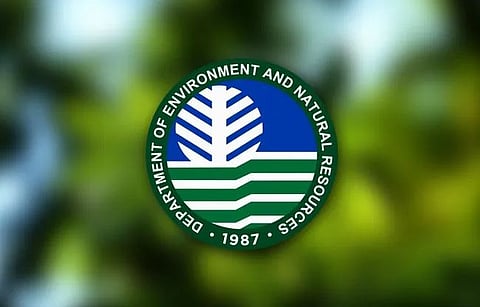
- NEWS
- the EDIT
- COMMENTARY
- BUSINESS
- LIFE
- SHOW
- ACTION
- GLOBAL GOALS
- SNAPS
- DYARYO TIRADA
- MORE

The Environmental Management Bureau, an agency under the Department of Environment and Natural Resources, reported on Tuesday that the country's air quality, as measured by the amount of particulate matter (PM) in the atmosphere has generally improved.
The DENR-EMB said that this is despite hazy conditions over the past several weeks caused by the prolonged suspension of dust, dirt, and other particles in the air due to thermal inversion.
In its report covering January to June 2023, the EMB recorded an average of 40 ug/ncm (micrograms per normal cubic meter) for Particulate Matter 10 (PM10) in Metro Manila — slightly below the 43 ug/ncm posted in the same period in 2022.
Nationwide, the average amount of PM10 was at 34 ug/ncm for the first six months of 2023, marginally higher than the 29 ug/ncm posted in the comparable period last year.
PM10, according to DENR-EMB, are microscopic matter suspended in the air that are 10 micrometers or less, such as dust from paved and unpaved roadways. While some of these particles can be filtered by the body, they can irritate eyes, nose, and throat. The 24-hour acceptable threshold standard level or guideline value for PM10 is 150 ug/ncm while the annual guideline value is 60 ug/ncm.
On the other hand, levels of PM2.5 in Metro Manila averaged of 20 ug/ncm in the first semester of 2023 are still below the average 23 ug/ncm in the same period in 2022. Looking at the entire country, the PM2.5 level averaged 18 ug/ncm is slightly above the 16 ug/ncm posted in the first half of 2022.
PM2.5 are particles that are 2.5 micrometers or less and can enter the lungs and the bloodstream. These originate from direct emissions into the atmosphere, such as forest fires or the mixing of gases from factories, industries, and motor vehicles. The annual guideline value or threshold for PM2.5 is set at 25 ug/ncm while the 24-hour guideline value is 35 ug/ncm.
DENR Assistant Secretary and EMB Director Gilbert Gonzales noted that the volume of air pollutants in Metro Manila have significantly decreased over the past decade when PM10 was averaging as high as 70 ug/ncm in 2012, and PM2.5 at 36 ug/ncm in 2017.
"The improvement in air quality can be attributed to a number of factors such as changes in fuel emission standards for motor vehicles, increased use of bio-fuels, and tighter monitoring of emissions from factories and other industrial facilities," Gonzales explained.
As of October 2023, the DENR-EMB has a total of 134 air quality monitoring stations nationwide with the capacity to monitor ambient air quality by measuring air pollutants PM10 and PM2.5, as well as levels of carbon monoxide, nitrogen oxide, and sulfur oxide.
Optimize mobility to reduce air pollution
Gonzales pointed out that the biggest contributor of air pollutants were motor vehicles. In Metro Manila, he said concentrations for PM10 and PM2.5 peak and even exceed threshold limits for ground-level ambient air quality when traffic becomes heavy in major thoroughfares.
"But air quality varies depending on location, time, and weather conditions. It changes over time," he added.
To improve air quality, Gonzales encourages people to avoid going out during the so-called rush hour, plan their trips during non-peak periods, practice car-pooling or ride-sharing, and promote eco-friendly transportation methods such as biking or walking. Burning of solid and agricultural waste is also strongly discouraged.
